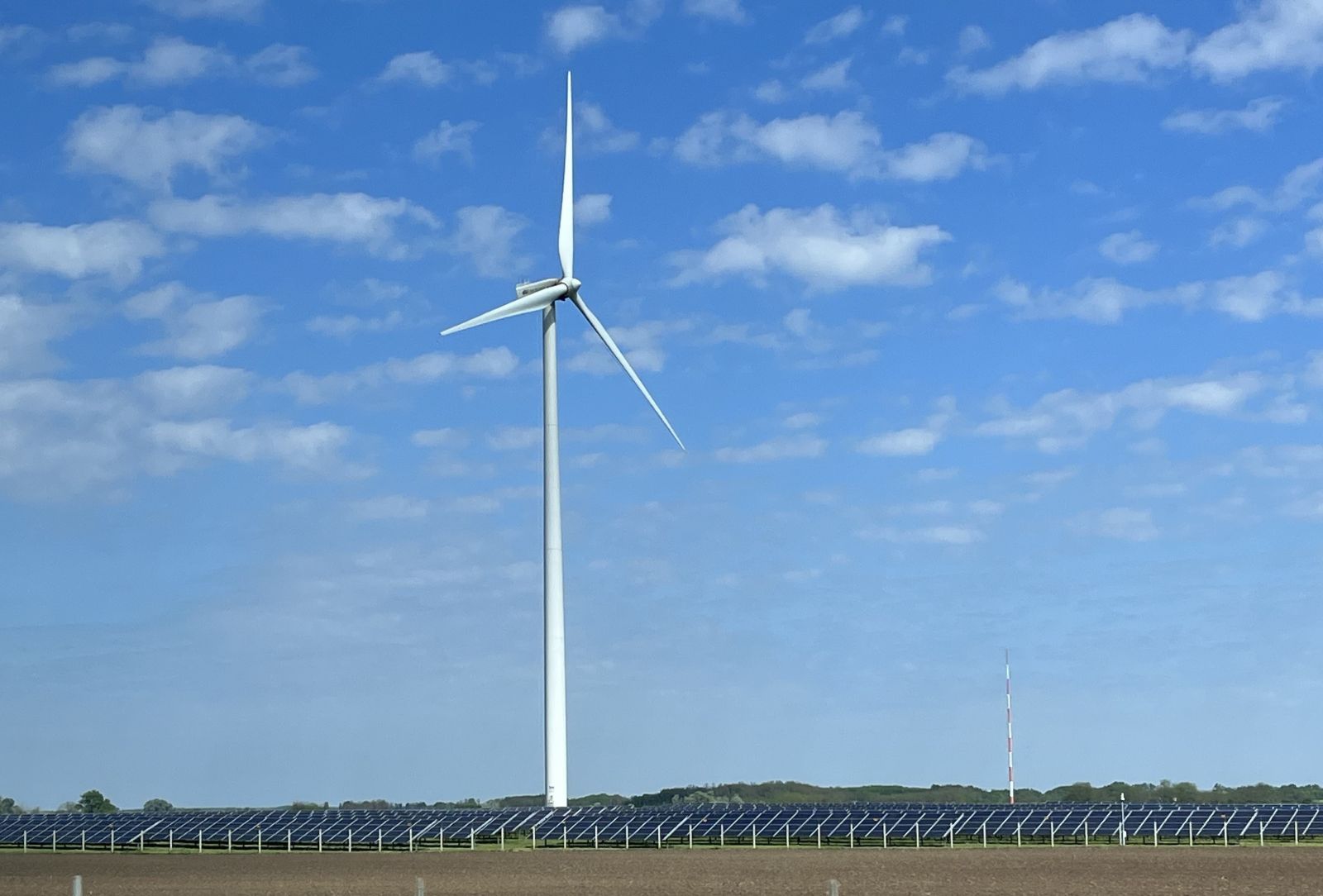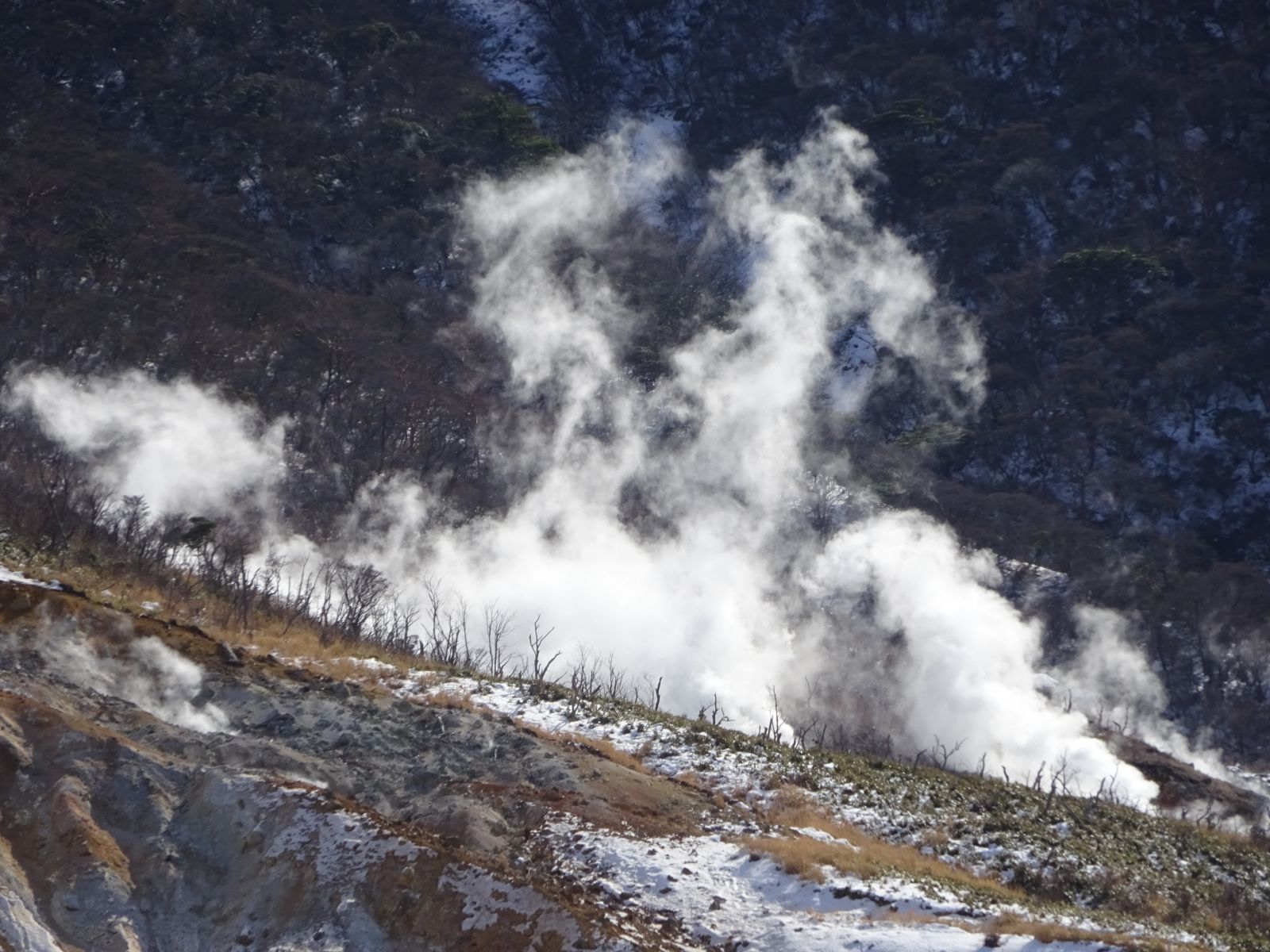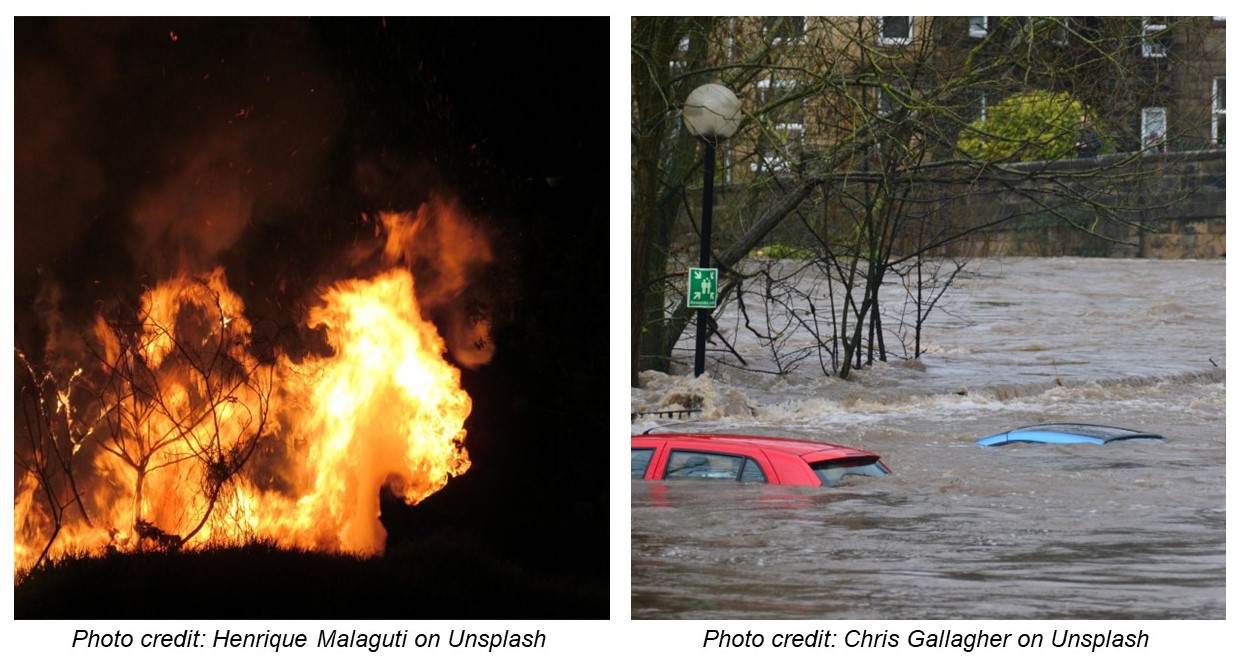Sustainability & CSR
Dubai 2023 – yet another COP flop?
Will the latest agreement lead to real progress in the fight against global warming?
By Mike Jewell

An increasingly common sight, especially in Europe – wind turbines and fields of solar panels. Photo credit: Mike Jewell
Unless you live under a rock completely cut off from the world (in which case you won’t be reading this), you will be aware that humanity is facing something of a crisis because of deteriorating climate conditions. Every day we are bombarded by alarming warnings about the existential threat we face because of our continued disregard for the atmosphere in the relentless pursuit of economic growth. At the same time, though, there is an equally vociferous commentary championing the technological advances and innovative solutions that are driving forward global progress towards decarbonisation.
As 70,000 delegates have just finished scurrying around Dubai at the 28th iteration of the UN’s “Conference of the Parties” (COP28) trying to figure out what to do next, this seems an apt moment to take a hard look at where are, especially as the northern hemisphere has just gone through its hottest ever summer and the southern hemisphere seems to be gearing up for something similar.
The fact is, since the dawn of the industrial age over 200 years ago, humankind has been creating changes in Earth’s atmosphere and the global climate through increasing levels of emissions of damaging gases, most notably carbon dioxide (CO₂). It hardly seemed to matter until someone pointed out in the 1970s that we might actually be running the risk of creating seismic shifts in weather patterns. Even then few paid much attention and we carried on regardless, worrying about lining our pockets rather than about what sort of quality of life we were likely to bequeath to the generations that come after us.
The focus has now shifted and, in the face of overwhelming scientific evidence of how much harm we’ve already caused and the likely impact of continuing with business as usual, the world is at last trying to decarbonise its activities by 2050, 2060 or 2070, depending on where you live.
The core of the problem is society’s insatiable and ever-growing demand for energy to power industrialised and modernising lifestyles. Vaclav Smil, distinguished academic and one of the foremost writers and thinkers on the role of energy in human society, explained in an interview with the BBC that “without energy there is no economy.” Energy has always been generated by the burning of fossil fuels and society’s consumption has multiplied many times over, both as a result of rapid population growth and as a result of rising levels of prosperity, principally in the global north and, more recently in rapidly developing countries like China and India. In 1800, there were roughly 1 billion humans on Planet Earth. Today, there are 8 billion and the average American consumes over 8 times more energy than citizens of the pre-industrialised era.
And 80% of global energy supply is delivered by burning fossil fuels – oil, gas, and coal, the dirtiest of them all. Despite the barrage of warnings about fossil fuels, global energy demand continues to rise, although the International Energy Agency (IEA) forecast that demand will peak by 2030 and then start to decline, as the transition to renewables gathers pace. Over 100 countries pledged to triple the amount of renewable energy they generate by 2030 in the opening sessions of COP28.
An encouraging sign perhaps, but in 2022, wind and solar, currently the two main sources of renewable energy, made up a mere 2% of the total global energy supply, so lifting that to 6% in the next seven years is a long way from the carbon free future that is necessary to preserve our current living conditions.
“50% of the reductions [in emissions] we to have to make to get to net zero are going to come from technologies we don’t yet have.”
John Kerry, US Special Presidential Envoy for Climate

Signs of subterranean energy sources in Japan.
Photo credit: Mike Jewell
Technology has been at the heart of global efforts to deal with our self-inflicted climate emergency from the beginning, with the emphasis on providing sufficient electric power so that we can basically ‘electrify everything’. When the United Nations Framework Convention on Climate Change (UNFCCC) was created in 1992, it specifically referenced the development and application of technologies to “control, reduce or prevent anthropogenic emissions of greenhouse gases”. (That’s a flowery way of saying using technology to stop us continuing to mess up the atmosphere and ruin the climate.)
The most obvious examples of the use of technology are the wind and solar energy farms that are continuing to spring up around the world and there has been an impressive build up in momentum behind the energy transition. In 2022, for the first time, global investment in renewable energy matched the ongoing investment in fossil fuels and the cost per kilowatt hour is now much, much lower than for conventional fuels.
The growth in renewables has been rapid – in 2022, solar generation was five times higher than in 2015, while wind generation was two-and-a-half times higher. The International Renewable Energy Agency (IRENA) is aiming for 380 gigawatts of renewable capacity in 2030, rising to 2,000 gigawatts in 2050. Some experts question whether this is realistic, but even if it is achieved, it will still only meet the energy needs of one-fifth of humanity.
So, the search goes on for more solutions, alternative energies and improved efficiencies from what has already been developed. Extensive research is being conducted in academic centres around the world searching for new materials for higher energy density cells to provide better electricity storage capability, and for new materials for photovoltaic cells that can offer improved conversion efficiency from solar energy to electricity.
Beyond solar and wind, the potential for wave power and geothermal power is being explored, as well as rather more fanciful ideas like refreezing the polar ice caps by brightening the clouds above them to reflect radiation back into space and placing giant satellite solar farms in geostationary orbit above the Earth and beaming the energy collected down to base stations for distribution through an international grid network. And recently, Virgin Atlantic flew one of its passenger aircraft from London to New York using Sustainable Aviation Fuel derived from plant sugars and waste animal fats.
There are countless other innovations being examined, although most won’t ever get off the drawing board, but one which does seem to offer significant potential is green hydrogen, produced by the electrolysis of water.
Hydrogen fuel can produce the intense heat required for industrial production of steel, cement, glass, and chemicals, thus contributing to the decarbonisation of industry. It may also be used to decarbonise shipping, aviation, and heavy goods vehicles through the use of hydrogen-derived synthetic fuels, so-called ‘e-fuels’.
For the moment, the green hydrogen industry is in its infancy, with limited production capacity, minimal infrastructure, and unit costs way above other forms of energy. However, many parties – including the Taiwan government – are betting on green hydrogen being a significant component of the post-fossil fuel landscape.
Another idea of great interest is mitigating the impact of our emissions by drawing down chunks of the CO₂ we have already deposited in the atmosphere and either repurposing it or locking it away out of sight forever.
Carbon capture technology has become central to many governments’ strategies, with enthusiastic support from the fossil fuel industry and other major polluters. (Taiwan is one of those relying on carbon capture to help balance the books of its net-zero 2050 budget.)
‘So, let’s carry on as usual,’ proponents say, ‘and collect the rogue CO₂ as it’s emitted or pull it out of the air before it can do any damage – what’s not to like?’
Traditionally, the natural world has taken care of this anyway, as forests and oceans have absorbed enough of the gas emitted to keep everything in balance. Unfortunately, we have knocked the global ecosystem out of whack by polluting the oceans and destroying millions of square kilometres of forest, all the while producing ever more CO₂ beyond the amount the Earth can handle.
Carbon capture technology, however, is far from being the cure for all ills, as it is still at a very early stage of development. Just a handful of commercial carbon capture projects are in operation, with the capacity to store considerably less than 1% of the world’s annual energy and industry-related emissions.
Though offering some hope for the future, carbon capture is facing major challenges because it is currently extremely expensive, the effectiveness of the processes is still being refined and there remains the question of just how and where billions of tonnes of gas generated each year can be stored safely?
The Earth is burning and drowning

The urgency of decarbonising society cannot be over stressed. Our greenhouse gas emissions have caused global temperatures to rise by 1.2°C since the beginning of the industrial age. Critically, with all the CO₂ pumped out, the concentration of the gas in the atmosphere last year reached 418.6 parts per million (ppm), a level not seen for 3 million years.
And concentration is continuing to rise. The latest Global Climate Budget, released earlier this month, suggested that we have just enough CO₂ “credit” in the bank for seven more years of emissions at current levels, before we breach 430 ppm, ensuring average global temperatures will be consistently 1.5°C above pre-industrial levels, the limit set by scientists for keeping some measure of control over the Earth’s climate.
Of course, 1.5°C isn’t an all-or-nothing mark, with Paradise on this side and Armageddon on the other, but scientists have increasingly focused on this level as a significant tipping point, beyond which the climate impact will be far more severe. In fact, every one-tenth of a degree, plus or minus, matters.
+2°C is an altogether different matter. If CO₂ concentrations reach 450 ppm (and present rates of increase suggest we’ll get there before 2050) an unstoppable chain reaction in climate change is likely to be set in motion that will make huge areas of the planet uninhabitable in the second half of the century. In 2018, the International Panel on Climate Change (IPCC) concluded the difference between +1.5°C and +2°C could mean substantially more poverty, extreme heat, sea level rise, habitat loss, and drought.
Even now at +1.2°C, we are seeing more frequent and more serious extreme weather events and 2023 is just a foretaste of what we can expect as the average temperature climbs. The northern hemisphere was the hottest summer on record by far, with temperature records being broken in many places: Vietnam, Laos, Thailand, parts of China, Sicily, Sardinia and, topping them all, Death Valley, California which hit 56.7°C. Water temperatures in the Mediterranean also set new highs, while the sea in parts of the Florida Keys reached bath-tub levels.
The scorching heat, coupled with prolonged dry periods and high winds, created the perfect conditions for devastating wildfires all around the Mediterranean, in Canada and, in Hawaii.
Heat was not the only problem. Savage storms brought powerful winds, biblical rains and devastating floods to Madagascar, Mozambique, Myanmar, Libya, Brazil, The Philippines, Bulgaria, Greece, Turkey and several Chinese provinces. The list goes on.
Lives were lost, livelihoods wrecked, and millions displaced. It is estimated that around 3.5 billion people (i.e. almost 45% of the world’s population) live in areas that are highly vulnerable to the effects of climate change.
Looking back eight years to COP21 and the much-vaunted Paris Agreement, policymakers set out a goal of substantially reducing global greenhouse gas emissions to limit the global temperature increase. At the time, experts calculated that an overall decrease in emissions of 43% was required by 2030 to keep below +1.5°C.
Instead, emissions have risen by a further 6%. We now have only seven years left to cut emissions in half to keep the temperature rise below the target. The recent Global Stocktake of progress towards emission reduction unsurprisingly revealed that the world is a long way from meeting the Paris targets and that, if countries continue on their current paths, we will successfully heat the planet by 2.5-2.9°C.

Photo: COP28 official X page
Which brings us to the recently concluded jamboree in the desert, COP28.
From the beginning, the optics were not good. The conference was being hosted by a country that has got rich on revenue from exporting oil and was under the presidency of the chairman of ADNOC, the state oil company, which has plans to expand production substantially in the next few years.
Beforehand, evidence emerged of Emirati officials trying to use their position as climate summit hosts to strike new oil and gas deals with international delegations. Although there was no sign that any possible approaches were followed through, the affair did nothing to reassure the sceptics.
Over the years, the climate conference has become one almighty circus, described by the New York Times as “part trade fair, part protest stage, part debate forum…where people come from all over the world, from all kinds of sectors to show off their gadgets, make deals, spar over big ideas and of course, lobby the diplomats”.
The sheer number in attendance was mind boggling – around 70,000, almost double last year’s number, coming together in a typically over-the-top mini-city just 20kms from the world’s largest natural gas power plant. In amongst the crowd were 1,200 lobbyists for the oil and gas industry, including several high-powered representatives of the OPEC oil exporters cartel, desperate to protect the fossil fuel industry and preserve its lucrative role as a driver of the global economy.
Eventually, an agreement was hammered out and “gavelled through” with apparent unseemly haste, minimising the chance for dissent in the concluding plenary session. On the face of it, the headline item in the agreement represented a big step forward. After 28 years (lost years, some might argue), most of the nations of the world – let’s not forget that Taiwan was, as always, not invited to the junket – dared to call out fossil fuels as the root cause of the climate crisis.
The key item in the pact “calls on” countries to “contribute” to global efforts in “transitioning away from fossil fuels in energy systems, in a just, orderly and equitable manner, accelerating action in this critical decade, so as to achieve net zero by 2050 in keeping with the science.”
Many commentators have hailed this as the beginning of the end for fossil fuels and perhaps it is, but the language is desperately weak and vague, leaving lots of wiggle room. 130 countries had backed a call for a total phase-out of fossil fuels, but 68 others, headed by Saudi Arabia and other petrostates, blocked the move and the compromise “transition away”, alongside the pleading tone for countries to contribute to the process, with only vague deadlines and no specific goals gives the fossil fuel industry full licence to continue drilling, producing and selling their products.
The agreement also urges further development of carbon capture technologies and recognises the need for the use of “transitional fuels” during the transition to zero emission fuels.
Both of these provisions further benefit business as usual. Carbon capture mechanisms are seen by many as a way for businesses to carry on as before, using carbon capture to reduce their emissions, instead of re-engineering their production methods. However, it will be many years before the technology is a viable commercial proposition and ready to make any form of meaningful contribution, by which time we’ll be starting to boil.
Transitional fuels is simply a euphemism for natural gas, so COP28 recognises that this fuel will remain part of the energy mix for some decades yet – a further fillip to Big Oil and the petrostates. No wonder Professor Mike Berners-Lee commented, “Cop28 is the fossil fuel industry’s dream outcome, because it looks like progress, but it isn’t.”
There are some positives to come from the agreement, as my fellow Euroview contributor Paul Shelton pointed out in an article on LinkedIn:
https://www.linkedin.com/pulse/did-cop28-achieve-anything-real-paul-shelton-129ec%3FtrackingId=XdJjbRrpSASMXwnQPqvRDw%253D%253D/?trackingId=XdJjbRrpSASMXwnQPqvRDw%3D%3D
However, there remains an overwhelming sense of disappointment at opportunities missed once again, partly because the conference has delayed until 2025 requiring countries to provide updated figures on their emission reduction goals, bringing us another two years closer to +1.5°C. And partly because the agreement left so much undone.
Mary Robinson, former Irish President and now a respected figure in international affairs, weighed in with a powerful and typically thoughtful opinion on the COP outcome.
“The COP28 agreement, while signalling the need to bring about the end of the fossil fuel era, falls short by failing to commit to a full fossil fuel phase out.
If 1.5°C is our ‘North Star’, and science our compass, we must swiftly phase out all fossil fuels to chart a course towards a liveable future. To fail to keep global warming below 1.5°C has catastrophic implications for the most vulnerable communities and countries.
At a time of profound global challenges, that nations have managed to salvage enough common ground in Dubai to keep the climate action process moving forward is notable. Progress on loss and damage and tripling renewable energy demonstrate the vital role of multilateralism in addressing the climate crisis. However, at COP28 transparency, equity and climate justice have been undermined by misleading language, false solutions and game-playing. Furthermore, the final agreement lacks the critical financial keys to unlock the trillions of dollars needed for any just transition. Without providing the necessary means for implementation we doom those countries on the frontlines of the climate emergency to failure.”
In short, COP28 has failed to deliver and our efforts to manage climate change remain a long way off track.
